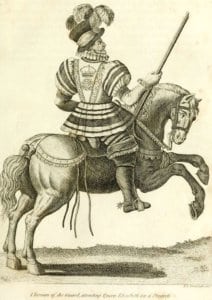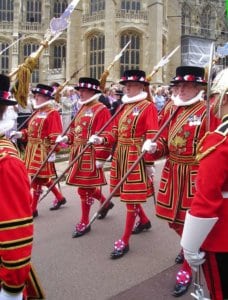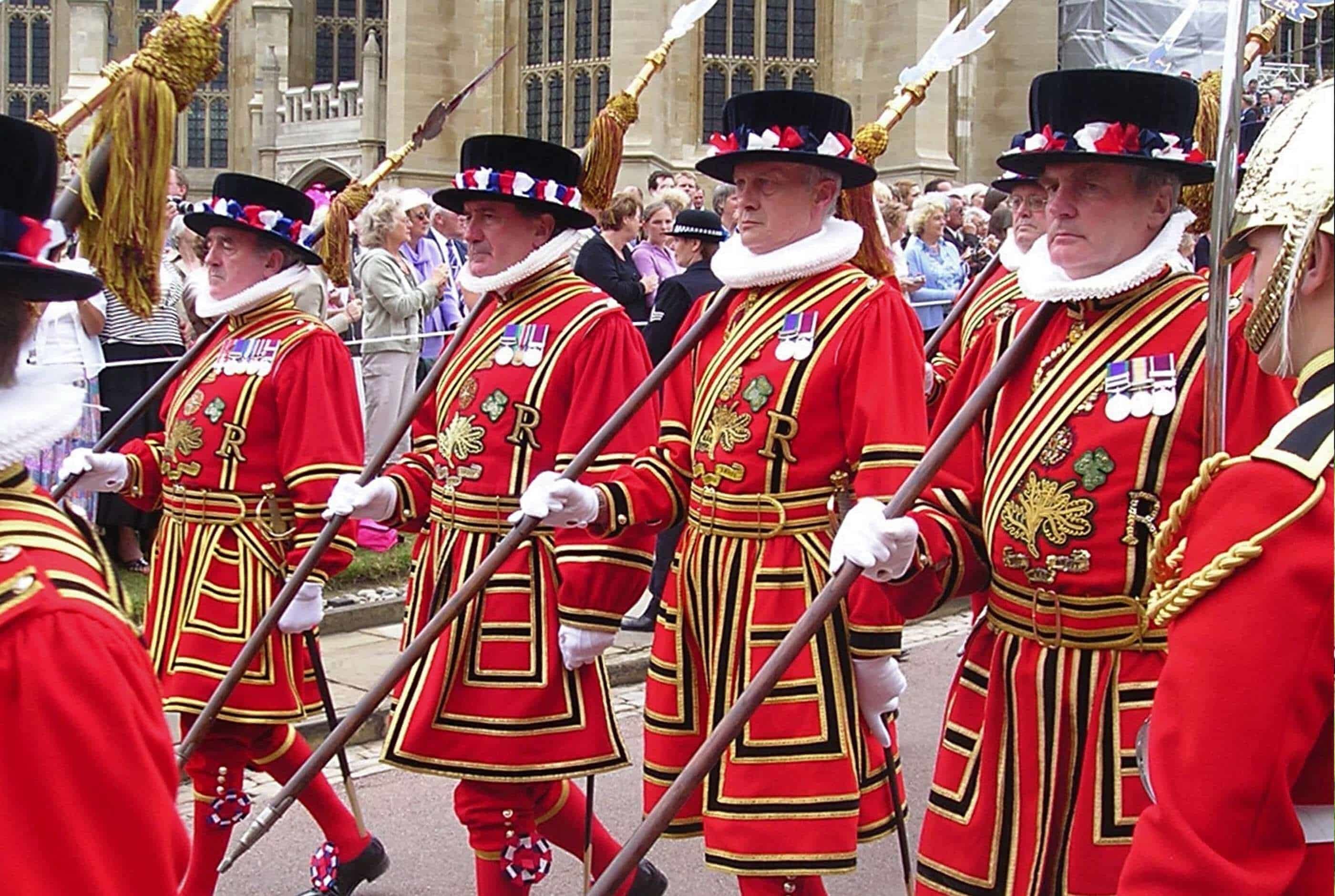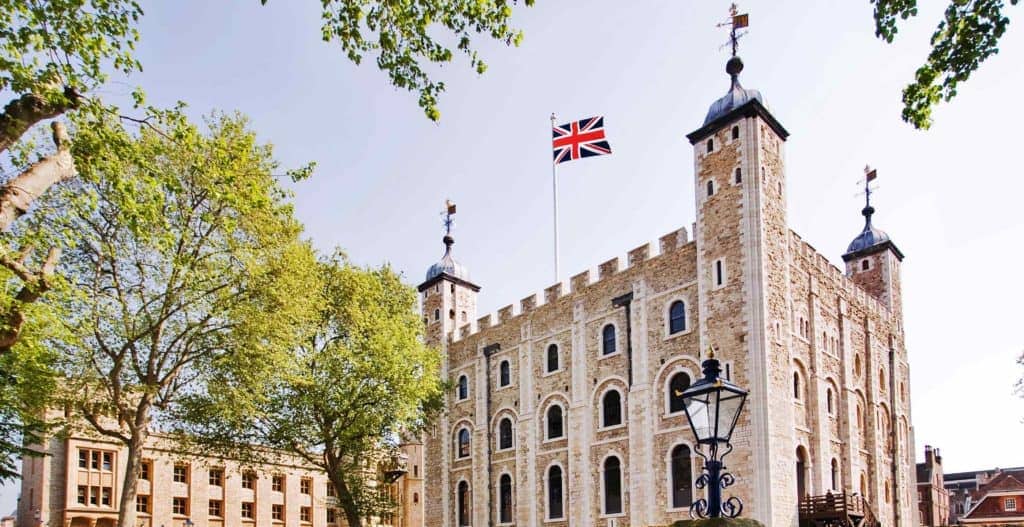The first part of the ceremony of the State Opening of Parliament takes place out of public sight, when the cellars beneath the Palace of Westminster are searched by the Yeomen of the Guard, resplendent in their Tudor-style uniforms, in a tradition that dates back to 1679.
This harks back to the Gunpowder Plot of 1605 when Guy Fawkes was discovered, with gunpowder, hiding in the cellars in an attempt to blow up both king and parliament.
The Body Guard of the Yeomen of the Guard, to give them their full title, was created by Henry VII in 1485 at the Battle of Bosworth and is the oldest military corps in existence in Britain. They have served the monarch continuously since then, even during The Commonwealth (1649 – 1659) when they guarded King Charles II in exile in France.
The Yeomen of the Guard were responsible for guarding the interior of the monarch’s palaces: they tasted all of the sovereign’s meals in case of poison, they prepared the monarch’s bed and one of the guard slept outside the king’s bedroom. These now obsolete duties are still referred to in the rather curiously named ranks of Yeoman Bed-Goer and Yeoman Bed-Hanger!
 A Yeoman of the Guard at the time of Queen Elizabeth I
A Yeoman of the Guard at the time of Queen Elizabeth I
The Yeomen of the Guard also took to the field of battle, the last time at the Battle of Dettingen in 1743 during the reign of King George II. From then on their role became purely ceremonial, that is until 1914 when at the outbreak of the First World War, King George V requested that they again resume guarding the royal palaces, thus releasing the police elsewhere. He also allowed them to join the armed forces.
The Yeomen of the Guard, in their elaborate Tudor uniforms, are instantly recognisable. The gold embroidered emblems on their red tunics feature the crowned Tudor rose, the shamrock and the thistle, the motto ‘Dieu et Mon Droit’ and the initials of the reigning monarch, currently ER (Elizabeth Regina). The outfit is completed by red knee breeches, red stockings and a sword. The long poles the Yeomen carry are eight foot long ornamental partisans, a popular weapon in the Middle Ages.
The Yeomen of the Guard are often confused with the Yeoman Warders who guard the Tower of London, as their uniforms are very similar and also date from Tudor times. However the Yeomen of the Guard can be distinguished from the Yeoman Warders by the red cross belts that run diagonally across the front of their tunics.
There are 73 Yeomen of the Guard. On appointment, all Yeomen have to be aged between 42 and 55 and have served in the military for at least 22 years. They must have attained the rank of sergeant or above, but not be a commissioned officer. They must also have been awarded the Long Service and Good Conduct Medal (LS&GCM).
 Yeomen of the Guard in procession to St George’s Chapel, Windsor Castle for the annual service of the Order of the Garter, 19th June 2006, by Philip Allfrey, under the CC BY-SA 2.5 licence
Yeomen of the Guard in procession to St George’s Chapel, Windsor Castle for the annual service of the Order of the Garter, 19th June 2006, by Philip Allfrey, under the CC BY-SA 2.5 licence
There are four ranks of officer in the Guard: Exon, Ensign, Lieutenant and the highest rank, Captain. The yeoman ranks include Yeoman, Yeoman Bed Hanger (YBH), Yeoman Bed Goer (YBG), Divisional Sergeant-Major (DSM) and Messenger Sergeant-Major (MSM).
Today the Captain of the Queen’s Bodyguard of the Yeomen of the Guard is a political appointment; the role is assumed by the Government Deputy Chief Whip in the House of Lords. One of the better known Captains was Sir Walter Raleigh who held the title between 1586 and 1592 until his imprisonment in the Tower of London. He was re-instated as Captain in 1597 and kept the title until 1603. Raleigh was beheaded in 1618.
Nowadays the Queen’s Body Guard of the Yeomen of the Guard perform a purely ceremonial role. As well as the State Opening of Parliament, they take part in the annual Royal Maundy Service, state visits by foreign heads of state, investitures at Buckingham Palace, coronations, lying-in-state and royal funerals.



